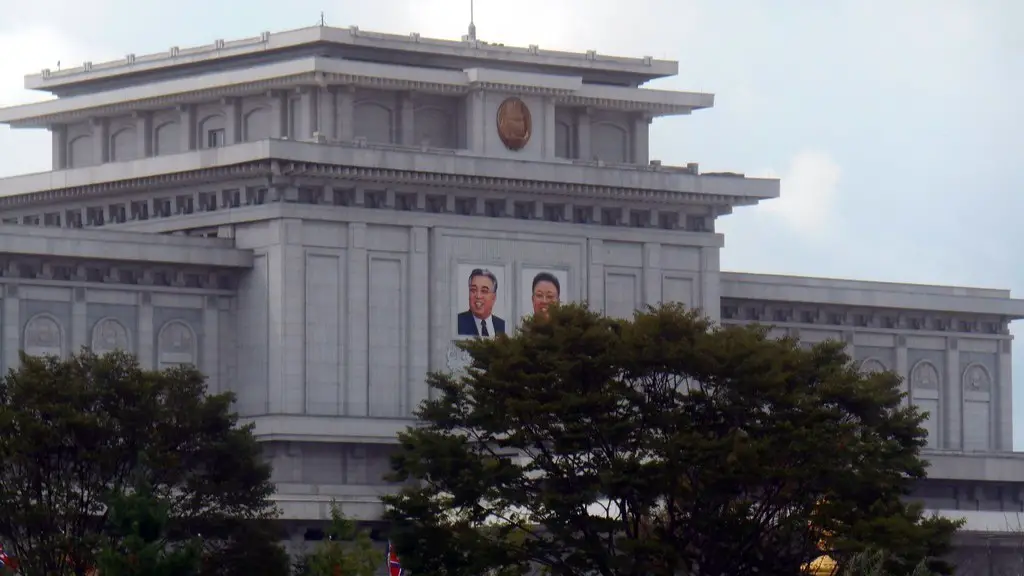Geopolitics
North Korea’s strategic motivation for the possession and development of a large submarine fleet is highly geopolitical in nature. North Korea remains a geographically isolated nation, hemmed in by its powerful neighbors South Korea, Japan, and China. North Korea is heavily sanctioned by the international community and relies on its submarine fleet for importing goods and for smuggling activities that evade these sanctions. Acquiring a submarine fleet also provides North Korea with a sense of security against perceived threats from its powerful neighbors.
A modern submarine fleet provides North Korea with a means of defending its borders and projecting its power overseas. It also improves North Korea’s access to the global arms market by allowing the Hermit Kingdom to move weapons and other materials via the sea undetected. Submarines are thus seen as an important element of North Korea’s military capability and an important tool of its foreign policy.
Technical Challenges
The technological challenges faced in developing effective submarines pose a serious challenge to North Korea. Submarines are highly complex vessels that require sophisticated technologies and skillful engineering for design and operations. Constructing submarines also requires a significant amount of resources and expertise, which North Korea severely lacks. Additionally, North Korea must contend with the problem of maintaining its damaged and aging submarines in the face of limited resources and sanctions.
In spite of these challenges, North Korea has managed to develop and deploy a formidable submarine fleet. North Korean submarines are mostly smaller than those of other nations, fitted with diesel engines for lower detection risk and equipped with sophisticated weapons systems. North Korean submarines have served as a valuable asset for the Hermit Kingdom in modern times, if not justifying the nation’s expenditure in the development of such large fleet.
North Korean Intentions
North Korea’s intentions in the development and deployment of a large submarine fleet can be inferred by analyzing actions of its leaders and military officials. In recent years, there have been reports of North Korean submarines being used for smuggling operations in the East Sea. The secretive state also appears to be planning to use its submarine fleet to launch surprise attacks against its enemies.
This theory is supported by recent technological advancements, such as North Korea’s missile tests and the development of an undersea ballistic missile. These technological advancements suggest that North Korea is not merely using its submarine fleet for defensive purposes, but is also actively gearing up for offensive operations.
Growing Tensions
The possession of an extensive submarine fleet has contributed to the growing tensions between North Korea and its neighbors and the international community. North Korea’s submarine fleet has been viewed by some as a potential threat to stability in the region and an indication of North Korea’s increasing military capabilities.
In response to the threat posed by North Korea’s submarine fleet, South Korea and Japan have increased efforts to develop their own submarine fleets and launched several joint naval exercises to protect their coasts. The international community has also imposed harsher sanctions on North Korea in an effort to contain the Hermit Kingdom’s nuclear ambitions.
International Responses
International responses to North Korea’s expanding submarine fleet have been mixed. Some countries, like China and Russia, have taken a softer stance and are engaging in dialogues with North Korea. These countries have urged North Korea to abandon its military ambitions and instead focus on economic development.
On the other hand, the United States and other Western countries have adopted a hardline approach, imposing harsher sanctions on North Korea and imposing a naval blockade to hinder its smuggling activities. These countries have also called for North Korea to abandon its nuclear ambitions and have demanded that it significantly reduce the size of its submarine fleet.
Effects on the Region
North Korea’s growing submarine fleet has had a major impact on the region. The increasing number of submarines has increased tensions between North Korea and its neighbors and the international community, leading to increasing sanctions and military buildup in the region. The possession of an extensive submarine fleet also increases the risk of military confrontation in the region and further destabilizes the security situation in the Northeast Asian region.
In spite of these negative effects, North Korea’s submarine fleet can still be seen as providing a measure of security for its citizens. By providing North Korea with a defensive capability, its submarine fleet gives the nation a sense of security against perceived threats. It also helps to protect the nation’s dwindling resources and ensures that it is able to continue to smuggle in goods and services despite the sanctions imposed by the international community.
Constrains on Submarine use
Despite its considerable submarine fleet, North Korea is still limited in its ability to use its submarines due to its lack of resources and technology. North Korea is unable to build and maintain submarines of larger size due to a lack of resources and skilled technicians. Additionally, North Korea’s submarines are limited by their obsolescence and are not able to effectively compete with modern submarines in terms of speed, stealth and armaments.
This limitation has effectively limited North Korea’s ability to use its submarines for offensive operations. North Korea’s submarines are mostly used for patrolling and smuggling operations, which pose a less serious threat to international security than offensive operations. As a result, North Korea’s submarine fleet is seen as more of a nuisance than a serious threat to international security.
North Korean Involvement in Arms Trade
North Korea’s submarine fleet has also been used as a means of participating in the international arms trade. North Korea has been known to sell parts of its submarine fleet to other countries in exchange for cash and other forms of assistance. North Korea has also been known to rent out its submarines to other countries and use them for transportation and other non-military purposes.
This involvement in the arms trade has contributed to the destabilization of the region, as it allows countries to obtain weapons and weapons technology that they would otherwise be unable to obtain. It also enables North Korea to generate revenue and increase its influence in the international community.
North Korean Possession of Submarines
In summary, North Korea has developed a large submarine fleet for a variety of reasons, mostly for defensive and geopolitical purposes. While North Korea’s submarine fleet is not seen as a direct threat to international security, it has still contributed to rising tensions in the region. North Korea’s submarines have also been used as a means of engaging in the international arms trade, potentially contributing to further destabilization in the region.




